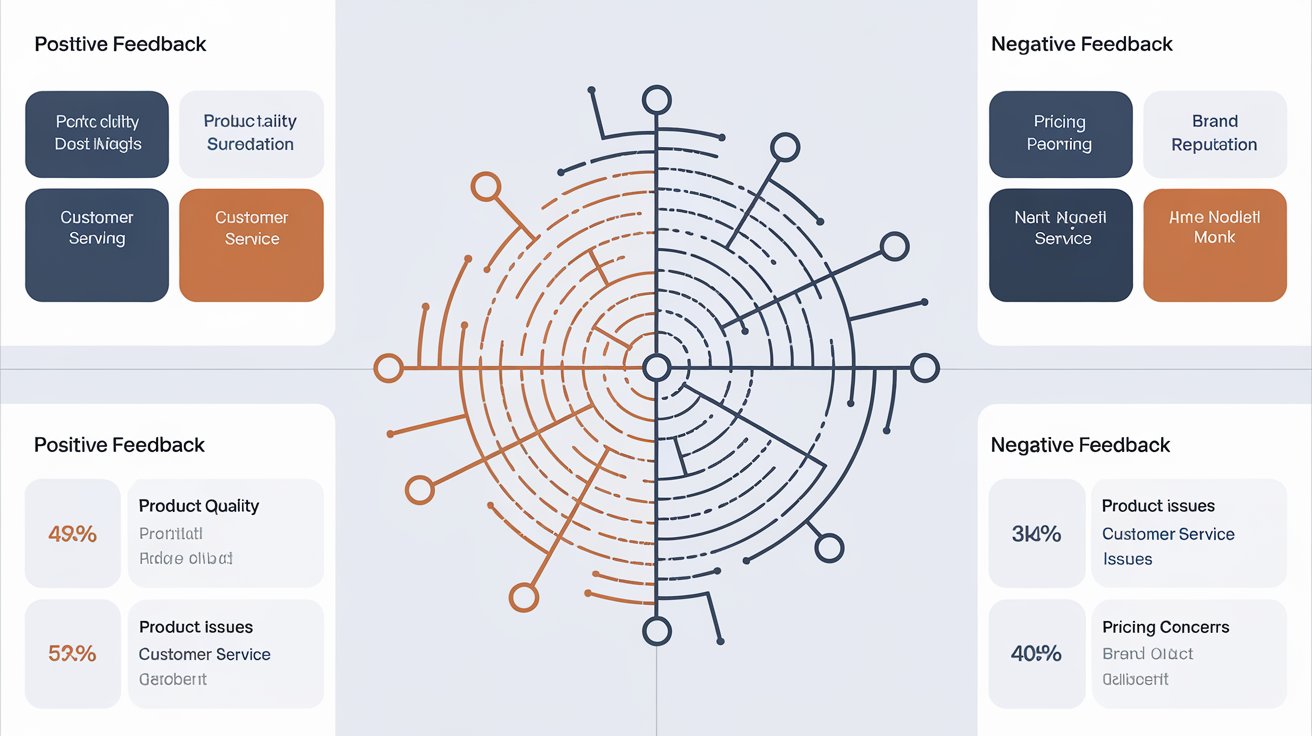
Voice AI for Competitive Analysis: Gaining Insights from Customer Conversations
Voice AI for Competitive Analysis: Gaining Insights from Customer Conversations
In a highly competitive market, staying ahead requires understanding not only your own products and services but also your competitors’. Customer conversations are often filled with valuable insights, including feedback on competitors’ offerings, preferences, and pain points. However, sifting through these conversations to extract meaningful data is a time-consuming process.
Voice AI offers an innovative solution by analyzing customer interactions, detecting patterns, and surfacing insights that inform competitive strategy. By leveraging voice AI, businesses can gain a deeper understanding of customer sentiment, identify emerging trends, and discover opportunities to refine their offerings.
Here, we explore how voice AI can enhance competitive analysis and help businesses make data-driven decisions.
Analyzing Customer Sentiment for Competitive Insights
Customer sentiment offers valuable information about what’s working (and what’s not) in both your business and your competitors’ products. Voice AI can analyze tone, language, and recurring phrases in customer conversations to gauge sentiment.
For instance, if customers frequently express frustration about a competitor’s service feature, this may highlight a weakness you can capitalize on. Similarly, if customers praise certain aspects of a competitor’s product, it indicates areas where you might need improvement. Voice AI’s sentiment analysis helps businesses understand these nuances, offering insight into how customers perceive their options in the market.
Identifying Trends and Patterns in Customer Feedback
Voice AI agents are adept at processing large volumes of data and can identify trends and patterns in customer feedback that may not be immediately obvious. By analyzing customer inquiries, concerns, and preferences over time, voice AI can reveal trends that help businesses adapt to shifting market demands.
For example, if customers frequently mention specific features or services they prefer, voice AI can detect these patterns and highlight opportunities for product development. This capability is particularly useful for businesses looking to stay ahead of industry trends and meet customer expectations proactively.
Gathering Competitor Product and Service Mentions
One of the most valuable aspects of competitive analysis is understanding what customers think about competitors’ products and services. Voice AI can track and record mentions of competitor names and products in customer conversations, providing businesses with direct insights into how competitors are perceived.
For instance, if customers often reference a competitor when discussing desired features, voice AI can flag this as a potential area of improvement. Understanding what customers find attractive or lacking in competitors’ offerings allows businesses to fine-tune their own products and target gaps in the market.
Detecting Pain Points in Competitor Offerings
Customers frequently share frustrations and challenges related to competitor products, often offering insights into unmet needs or flaws in the market. Voice AI can analyze these pain points by identifying specific keywords and phrases associated with customer dissatisfaction.
For example, if customers repeatedly mention issues with a competitor’s slow response time or confusing user interface, this can reveal an opportunity to enhance your own product in these areas. By addressing these common pain points, businesses can differentiate themselves and offer a superior alternative.
Supporting Product Development with Data-Driven Insights
Voice AI analysis isn’t limited to marketing or sales; it can also play a vital role in product development. By analyzing conversations for customer preferences and competitor references, voice AI provides product teams with actionable insights into the features customers prioritize.
For example, if customers consistently express interest in a feature offered by a competitor, voice AI can highlight this trend and suggest incorporating a similar feature in future updates. This approach allows businesses to stay competitive by aligning their product roadmap with customer needs and expectations.

Improving Marketing and Messaging Strategies
Voice AI insights can inform more effective marketing and messaging strategies by providing a clearer picture of what resonates with customers. For instance, if customers frequently mention competitor slogans or features, your marketing team can identify gaps in your own messaging and address these aspects to attract customers.
For example, if customers perceive a competitor as more user-friendly, voice AI can help tailor messaging that emphasizes your product’s ease of use or unique value. This alignment between customer perceptions and marketing strategies enhances brand positioning and strengthens your competitive advantage.
Monitoring Changes in Customer Preferences Over Time
Customer preferences are dynamic, and staying attuned to these changes is essential for long-term success. Voice AI can monitor shifts in customer conversations, tracking how preferences evolve over time and identifying emerging trends that may indicate future customer demands.
For instance, if there’s a sudden increase in interest in sustainable products or specific features, voice AI can highlight this trend early on. This foresight enables businesses to adjust their offerings to align with emerging preferences, keeping them relevant and competitive in a rapidly changing market.
Evaluating Competitor Performance Based on Customer Feedback
Voice AI can help assess competitor performance based on customer feedback, giving businesses insights into competitors’ strengths and weaknesses. By examining which aspects customers frequently discuss—whether positively or negatively—voice AI can help build a competitive analysis profile for key players in the market.
For example, if customers mention positive experiences with a competitor’s customer service, you may consider enhancing your own service to match. Conversely, if they frequently express dissatisfaction, it provides an opportunity to differentiate yourself by emphasizing superior customer support.
Using Voice AI to Track Competitor Brand Mentions Across Channels
Beyond analyzing direct conversations, voice AI can also be integrated to track brand mentions across social media and customer support channels. By capturing competitor mentions across various touchpoints, businesses gain a comprehensive view of competitor positioning and customer sentiment, allowing for a more complete competitive analysis.
This multi-channel tracking ensures that businesses have a well-rounded understanding of how competitors are perceived in the market and can adjust their strategies accordingly.
Getting Started with Voice AI for Competitive Analysis
Implementing voice AI for competitive analysis begins with setting up the AI to recognize and analyze keywords, competitor names, and sentiment markers. By training the AI on typical customer conversations, businesses can fine-tune it to detect trends, insights, and patterns relevant to their competitive landscape.
Regularly reviewing the AI’s insights allows businesses to stay agile, adapting to changes in customer preferences and competitor performance. With voice AI integrated into competitive analysis, companies gain the ability to make data-driven decisions and stay one step ahead.
Conclusion
Voice AI has opened up new possibilities for competitive analysis by offering deep insights into customer conversations. From identifying customer sentiment and spotting trends to monitoring competitor mentions and tracking changes in preferences, voice AI provides a powerful toolkit for businesses aiming to stay competitive. By leveraging voice AI for competitive analysis, companies can refine their products, adjust their messaging, and make informed decisions that position them for success in an evolving market.
STAY UPDATED
Sign up to be the first to find out when we add new languages, new bots, new capablities, and more. We respect your privacy and will never share your information with any third-party vendors.
Sign up to be the first to find
out when we add new
languages, new bots, new
capablities, and more. We
respect your privacy and will
never share your information
with any third-party vendors.




